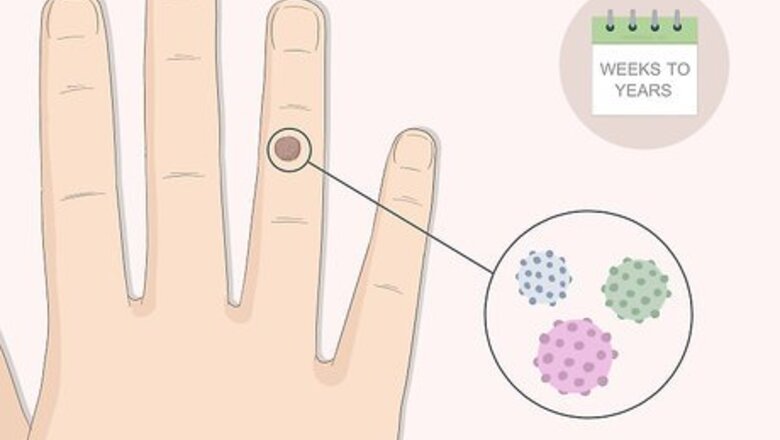
views
Using Medically Verified Remedies

Be patient. Warts are caused by HPV (human papillomavirus) and often disappear over time, without treatment. However, "time" could mean anywhere from a couple weeks to a couple of years, so you may wish to treat the wart to help it go away more quickly. If you have a healthy immune system, the warts should eventually go away on their own, but this can take anywhere from 1-3 years.
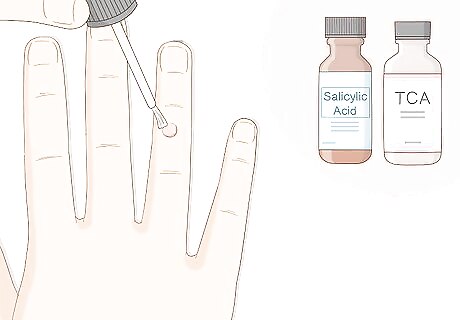
Use salicylic acid or 100% TCA. Salicylic acid is found in a lot of over-the-counter wart removers. Its effectiveness varies and it can take weeks for it work. Because these products are widely available over-the-counter, they're a good first-line treatment for warts. They help irritate the skin, which can trigger your body's immune response to the wart. Soak the skin in water for 5 minutes or longer, apply the acid liberally using the brush and let it dry. Leave it for a day. You can either peel or file it off and then file remaining dead skin. Do this every two or three days.
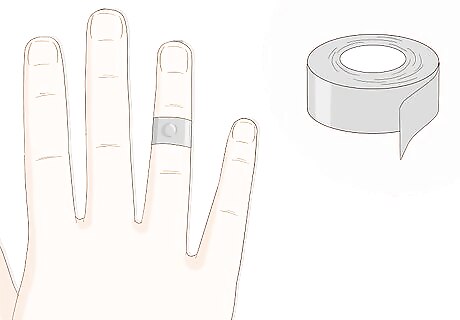
Use duct tape. Several studies have tried to assess the effectiveness of duct tape in removing warts. Duct tape occlusion therapy (DTOT) is supposed to localize medication in the general wart area as well as "choke" the wart itself. One study found that duct tape following the application of imiquimod 5% cream was an effective treatment against the common wart. However it takes a long time (up to 6 months), and usually people don't see success with this.

Apply cantharidin. Ask your doctor about using cantharidin, a fast-acting chemical that will burn away the wart. Unfortunately, cantharidin (brand name Ycanth) can be really expensive without insurance, upwards of $500. There is some pain involved, but you may see results in just a day. Cantharidin is also known as “beetle juice.” The doctor applies cantharidin directly on the wart, then applies a bandage. After a few hours, the cantharidin is washed off. Within a day, blisters will begin to form on the wart, which will gradually dry up and peel away—hopefully taking the wart with it. While the application of cantharidin doesn’t hurt, the blister that forms after it is washed away may cause discomfort. If it doesn't work in one treatment, you may need another method—your doctor will make appropriate recommendations.

Try liquid nitrogen. Another remedy your doctor may try is liquid nitrogen—or cryotherapy—to freeze the wart. It may cause some discomfort, and can take a few treatments to completely remove a wart, but can be very effective. Cryotherapy works by damaging the cells of the wart, which can help your body generate immunity to the wart. Alternatively, many drug stores carry OTC freeze treatments to zap the wart. If using an OTC wart freeze treatment, keep the following tips in mind: Follow the direction on the wart removal package. Your skin should turn from white to red in a matter of minutes, and a blister should begin to form underneath the wart. Small black dots should appear beneath the wart after a few days. This is a sign that the treatment is working. Resist the urge to pull the wart off. The wart should fall off on its own. If it doesn't, treat again after two weeks. Do not treat a wart that has been unsuccessfully treated three times; see a doctor.
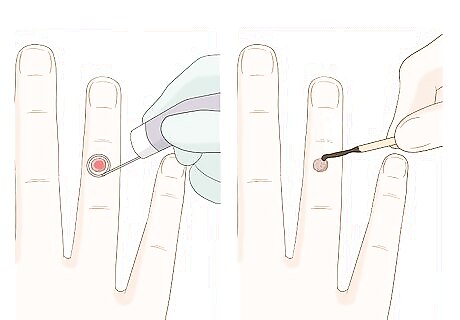
Burn the wart off. When other methods fail, burning the wart off (electrocautery) may be what's needed. There will be some pain involved, and burning can lead to scarring, so the best recommendation is to let your doctor handle it. Your doctor will use a laser to burn the wart away. This is sometimes effective, but best recommended after other methods have failed.
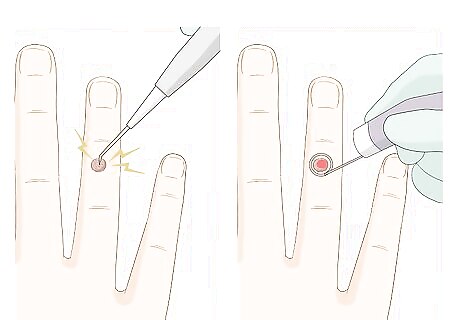
Have your doctor cut it out. When in doubt, have your doctor remove the wart by cutting it out surgically. This is something best left to a doctor, to prevent infection, and so that a local anesthetic can be used to mitigate the pain. A doctor will either do this by: Electrosurgery and curettage. This is where the doctor burns the wart with an electrical current and cuts it out afterward. The wart may still return because the blood vessels are still intact. Laser surgery. This is where the doctor burns the wart with an intense beam of light.
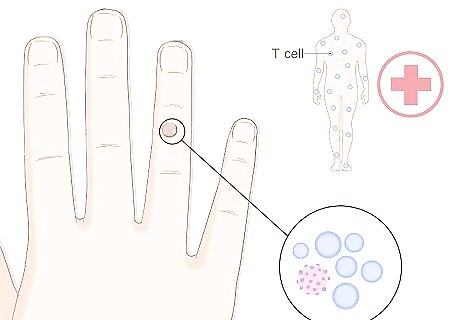
Consider immunotherapy. Your doctor will be able to counsel you on this treatment, which uses your body's own defenses to attack the wart.
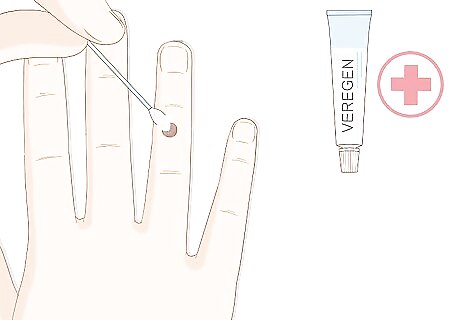
Ask your doctor about Veregen. This is a new medication that is used to treat genital warts as well as other warts.
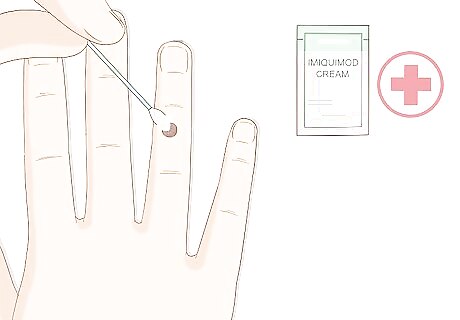
Use imiquimod. This is a topical cream that is used to treat some types of warts and skin cancers by stimulating an immune response. It does not cure warts, but it may help, in concert with other treatments. Ask your doctor for guidance.
Using Unverified Home Remedies
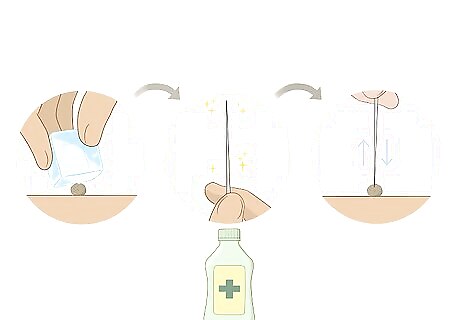
Encourage antibodies. Ice the wart, then sterilize a needle and poke deep into the wart several times, taking care to penetrate every layer of skin in the wart. By introducing the virus to your bloodstream, you help your body “see” the wart and fight against it, which can lead to its disappearance from your body. While some people claim this method is helpful for removing warts, it may be dangerous to attempt this.
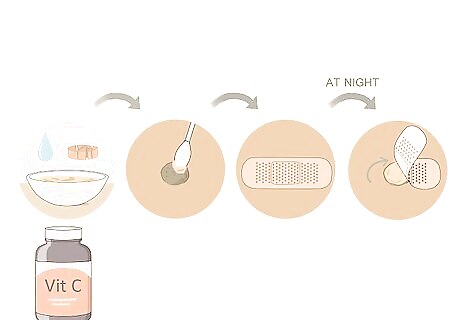
Cover it in vitamin C. Crush a vitamin C tablet and add water to make a thick paste. Apply it to the wart and then cover it with a bandage. Leave it on for the day then at night let it breathe (take off bandage) Some people claim this is effective, but there isn’t enough scientific evidence to back it up.
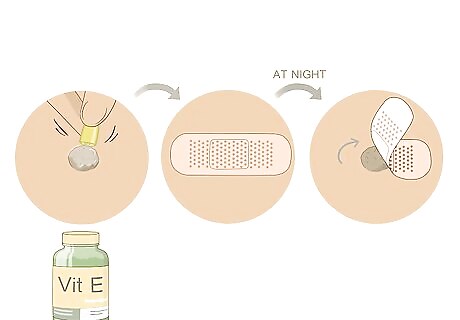
Wrap it in vitamin E. Break a vitamin E capsule and rub a little of the oil on the wart. Cover it with an adhesive bandage. Remove the bandage at night to let it breathe, then start over with the oil in the morning. Repeat three times a day. Applying vitamin E paste to a wart has been anecdotally shown to remove warts, but there’s not enough scientific research to prove it is effective.
Use hot water and pumice. Soak the wart in hot water until it softens. Scrape it down with a piece of coarse exfoliating pumice until you reach level with the skin. Apply salicylic acid gel or lactic acid gel to the wart and then cover it with a bandage.
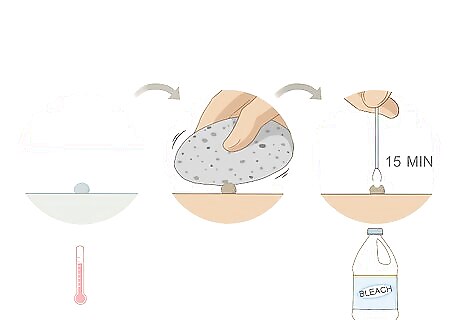
Use bleach to treat the wart. Dilute bleach in water at a ratio of about 30 to 1, water to bleach. Soak a cotton swab in the bleach-water mix and then hold the swab against the wart for 15 minutes (this may sting a bit). You must wash the area well after applying bleach. While bleach contains properties that can burn away warts, it can also do a lot of damage to your skin, even when diluted. Many experts do not recommend using bleach to treat warts.
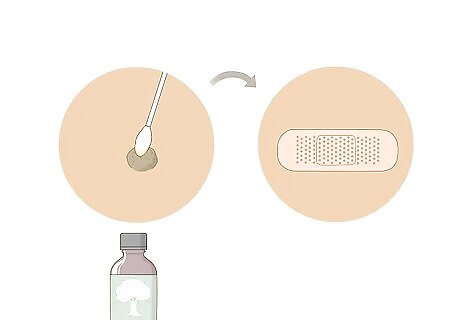
Apply tea tree oil. Dab a little on the wart and cover with a strip bandage. Do this for up to three weeks.
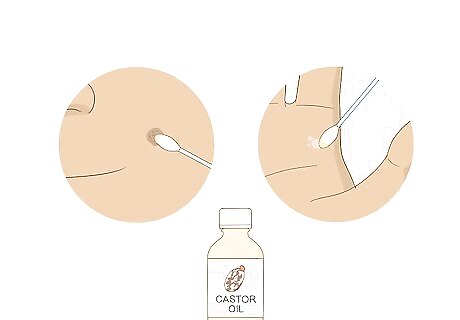
Try castor oil. The acid in castor oil irritates the wart and works best on small, flat warts on the face and back of hands. Apply castor oil to the wart with a cotton swab every day for 2 to 3 weeks.
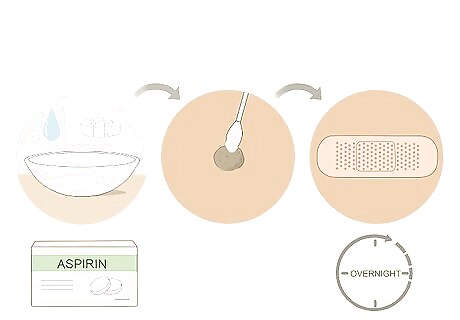
Use aspirin. Aspirin is the ingestible form of salicylic acid, which is often used to treat warts. Take a few aspirins and crunch them up, adding a few drops of water. Take the mixture and put it onto the affected wart areas, then apply an adhesive bandage. Leave it on overnight.
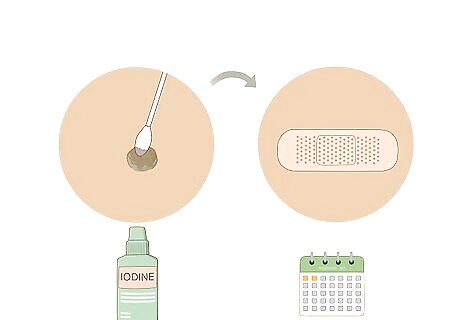
Try some betadine (iodine). Apply betadine to the wart and cover with a bandage. Leave the bandage on for one or two days, then remove it. Iodine has not been proven to treat warts, but some people claim it’s effective.
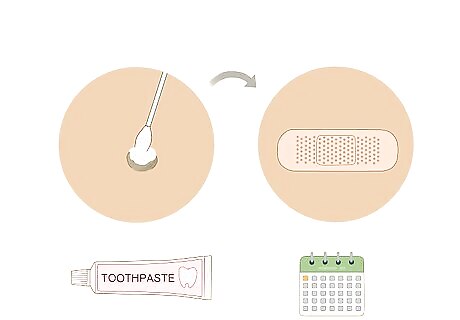
Put toothpaste on the wart and apply an adhesive bandage. Leave for a day and repeat until the wart is gone. Some people claim toothpaste is effective at treating different skin conditions such as acne, but most experts agree toothpaste is not effective as a skin treatment, and may be actively harmful to your skin.
Using Unverified Food Remedies
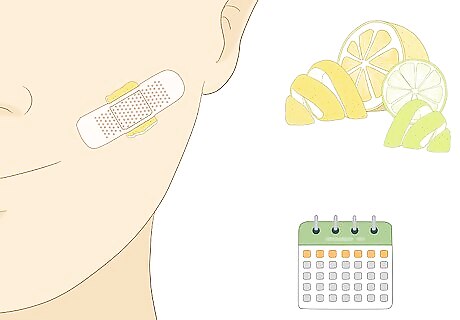
Use an orange peel. Cut a section of orange peel slightly larger than the wart and tape it over with an adhesive bandage or tape. Refresh the peel every day or so and keep the wart covered for as long as possible. After about a week or so, the entire wart may come out completely.
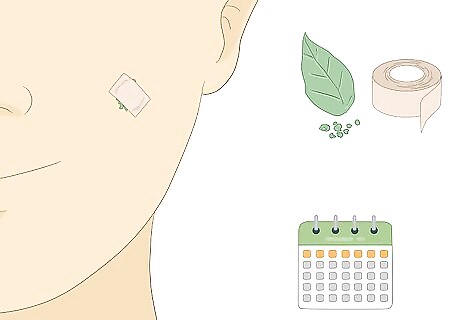
Use basil. Tape crushed, fresh basil to your wart using waterproof first-aid tape. Do this daily for up to a week. The virus-killing compound in the basil leaf will kill your wart. Some people anecdotally report the efficacy of basil at removing warts, but this isn’t backed by science. However, it likely won’t hurt to try.

Take garlic. Garlic has been shown to be effective at making warts go away. Taking 2 garlic capsules a day for at least several weeks may help make your warts peel off. You can also cover the wart with garlic oil once or twice daily for a month.

Eat immune system-strengthening foods. Following a healthy diet can strengthen your immune system and alleviate symptoms of HPV. Eat plenty of garlic, sweet potatoes, whole-grain breads, sunflower seeds, and rice.
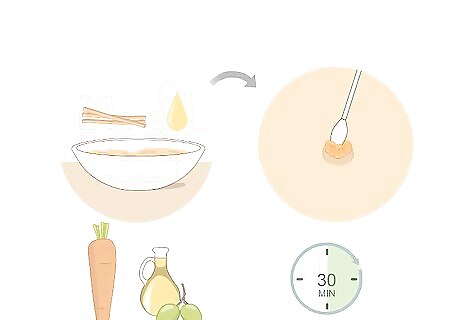
Cut up carrots. Finely grate a carrot and add enough olive oil to it to make a paste. Dab the paste on your wart twice daily for 30 minutes. Do this for two to three weeks. Carrots have not been proven to remove warts, but some people claim it is effective.
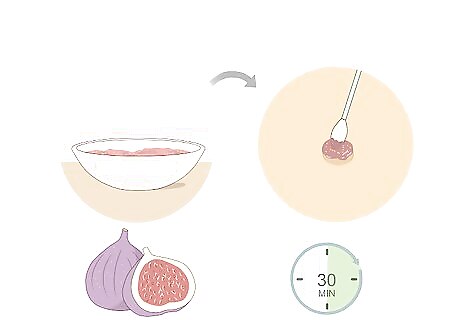
Make a fig mask. Mash up a fresh fig and place some on your wart for 30 minutes. Do this daily for two to three weeks. Fig juice has not been scientifically shown to remove warts. However, fig tree latex has been proven to help reduce warts.

Use lemon juice. Squeeze lemon juice on your wart, then cover it with fresh, chopped onions. Do this for 30 minutes once a day for two to three weeks. Lemon juice as a cure for warts has not been backed by science, but some people claim it’s effective.
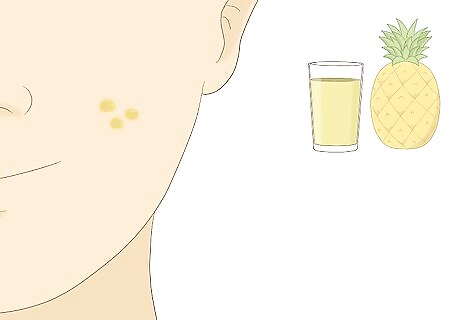
Put it in pineapple juice. Soak your wart in pineapple juice daily. Pineapple juice is rich in bromelain, a protein-dissolving enzyme which may help minimize warts.
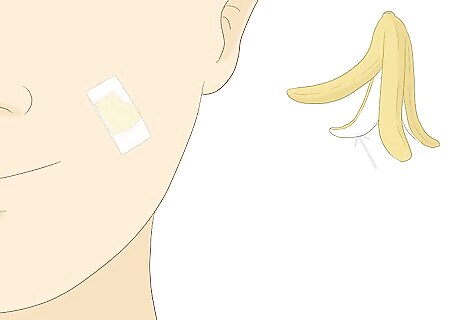
Bind your wart with a banana peel. The potassium may help speed the disappearance of the wart. Cut out a section of the peel so it's slightly smaller than the tape you'll be using. Rub the inside of a banana peel onto the wart and then secure with duct tape. Keep it on the wart for a day before removing. Repeat until wart is fully removed.
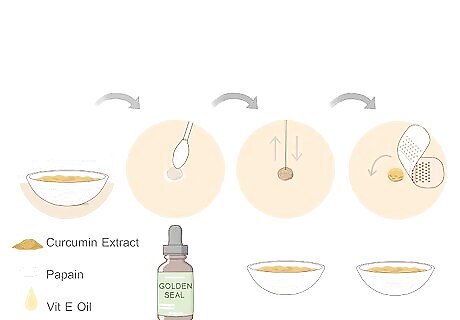
Create a preparation of curcumin. Curcumin is a turmeric extract that can be found in health food stores. Combine curcumin, papaya extract, and vitamin E oil. Dab the wart and surrounding area with alcoholic extract of goldenseal. This will stimulate local immune activity. Some people claim that it’s helpful to dip a sharp needle or pin into the curcumin paste and press the needle as deep into the wart as possible to inject the wart with the paste. However, this is potentially dangerous and could open you up to infection or injury. Spread the remaining paste over the wart area and cover with medical tape. This technique is effective against flat warts, which are found on the face and hands. Flat warts are notoriously stubborn and will often remain on the skin after the body has acquired resistance to the virus. This will finish the warts off in lieu of freezing. Curcumin has been shown to have some efficacy in the treatment of skin conditions; however, there hasn’t been enough research on the role of curcumin in the treatment of warts.
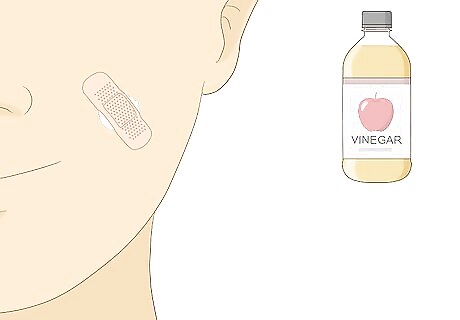
Use apple cider vinegar. Take a cotton ball (only enough to cover the wart) and soak it in the vinegar. Secure with a band aid or duct tape overnight. Keep in mind that this might be very painful. Change the cotton pad daily and keep it on every night if you can. After one week, the body of the wart will start to peel off and you can gently scrape it away to reveal healthy flesh beneath. Let the area heal once this is done.
Trying Gentler Methods for Removal

Use warm water and sea salt. Soak the wart for 10 to 15 minutes in warm salt water to moisten the skin. Scrape the dead skin layers off the wart using a nail file, pumice stone or mild sandpaper. You could also use your fingers, but wash them thoroughly before and after, as warts can easily spread. Moisten the wart and apply a large flake of sea salt to it. Put a band-aid or tape over the wart to hold the salt in place and observe for several days, replacing it after you shower or if it falls off. While warm water has been shown to be effective at removing warts, salt water specifically has not been scientifically proven to cure warts.

Mix up baking powder. Mix baking powder and castor oil into a paste, then apply it to the wart at night by covering it with a bandage. Remove the bandage the next morning. Repeat as necessary. Anecdotally, baking powder has been claimed as a cure for warts, but there’s little scientific research to back this up.

Use hot water. Soaking plantar warts in very hot water is helpful because it softens the wart and may kill the virus. Make sure the water is not hot enough to cause burns—keep it between 113°–118°F (45°–48°C).
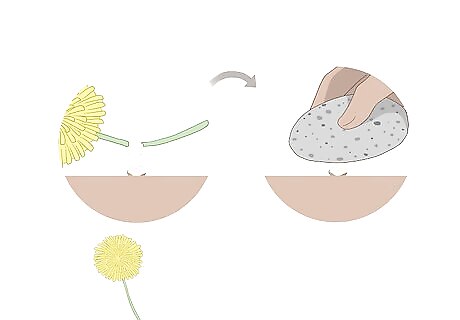
Apply dandelion sap. Pick a fresh dandelion and break the stem. Apply the milky sap that oozes from the stem onto the wart. Repeat this three or four times a day. Scrape the wart with pumice to remove dead layers of skin. Continue doing this until the wart fades away. Note that dandelion juice is a folk remedy for wart removal and is not backed by science.
Causes and Types of Warts
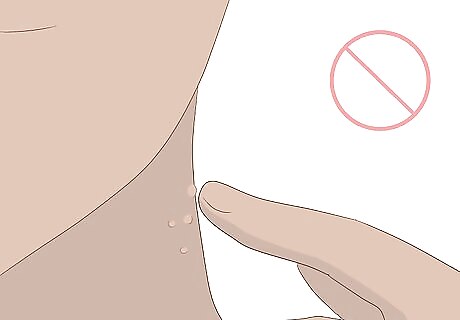
Avoid touching warts as much as possible. Warts are small growths on the body, and are caused by the human papilloma virus (HPV), and can spread to other parts of your body. It's also possible to spread the HPV virus to others through cuts, open sores, or sexual activities.
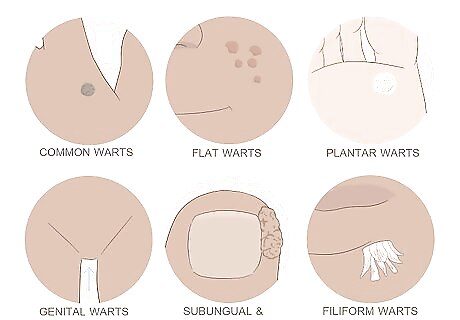
Learn the different wart types. They come in various shapes and sizes, and usually present themselves as a raised round or oval growth on the skin. Common warts: These can appear anywhere on the body. Most often they are seen on the hands. They are rough in appearance, rounded, and are grayish-brown. Flat warts: These are usually found on the face, legs, and arms. They are small, flat (as the name implies), and can be spread by shaving. Plantar warts: These grow on the soles of your feet, and look like thick patches of skin with dark speckles. They can be extremely painful. Genital warts: These are found on and around the genital region, between the thighs, and can also appear in the vagina and anus. Subungual and periungual warts: These appear under fingernails and toenails. They are rough bumps with an uneven surface. Filiform warts: These generally appear around the mouth and nose. They are skin-colored, and have thready growths sticking out of them.













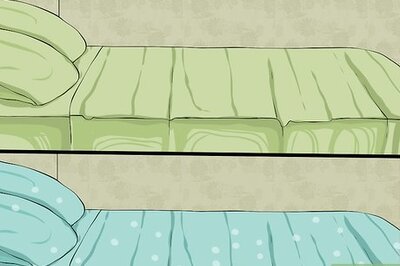


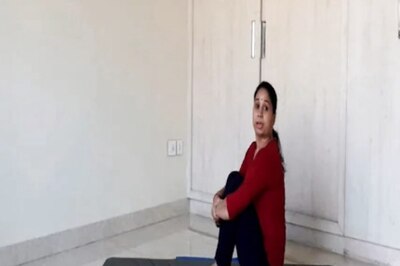


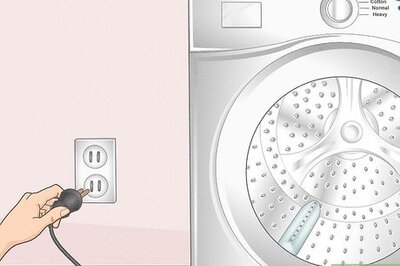
Comments
0 comment